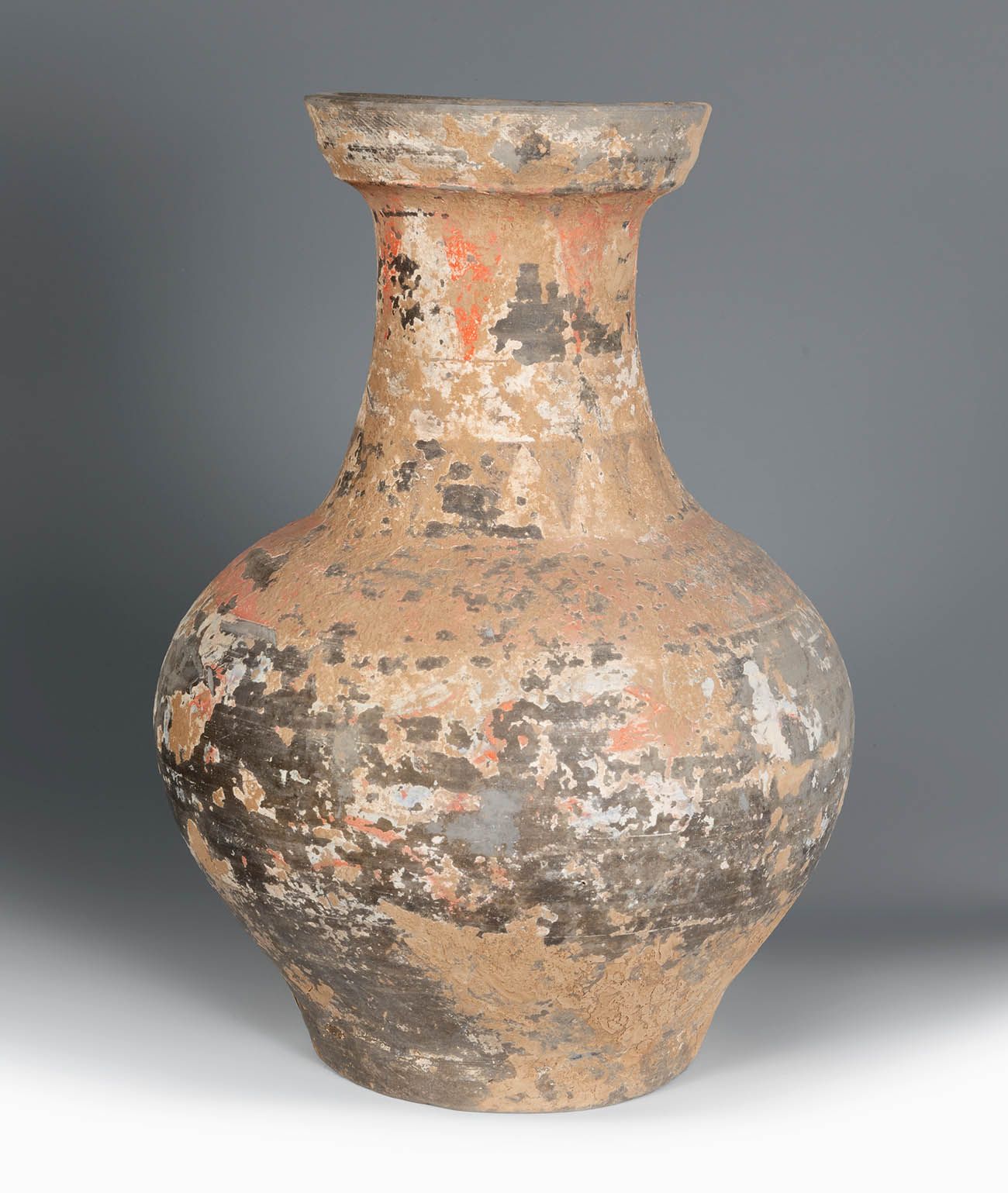Description
Vessel. China, Han Dynasty, 206 BC-AD 220. Polychrome terracotta. Size: 39 x 28 cm. During the Han dynasty the state became more unified and powerful, heralding a period of consolidation and expansion under an efficient centralised administration. Trade was extensive and far-reaching and brought stylistic and technical influences from other countries. At the same period lead-glazing was practised in Alexandria and it was probably from here that the Chinese learned the art of glazing earthenware. Vessels were no longer made simply by hand, but with the aid of efficient lathes and, in some cases, using moulds, again reflecting the influence of bronze casting. Bronze was still the major influence and the pottery forms and glaze followed as closely as possible. For example, green lead glazes made it possible to copy the colour of bronze. Over time, this glaze has become iridescent and today appears more similar to bronze than it did originally. Some vessels intended for religious ceremonies even have rings modelled on the outside, in imitation of their bronze counterparts.
13
Vessel. China, Han Dynasty, 206 BC-AD 220. Polychrome terracotta. Size: 39 x 28 cm. During the Han dynasty the state became more unified and powerful, heralding a period of consolidation and expansion under an efficient centralised administration. Trade was extensive and far-reaching and brought stylistic and technical influences from other countries. At the same period lead-glazing was practised in Alexandria and it was probably from here that the Chinese learned the art of glazing earthenware. Vessels were no longer made simply by hand, but with the aid of efficient lathes and, in some cases, using moulds, again reflecting the influence of bronze casting. Bronze was still the major influence and the pottery forms and glaze followed as closely as possible. For example, green lead glazes made it possible to copy the colour of bronze. Over time, this glaze has become iridescent and today appears more similar to bronze than it did originally. Some vessels intended for religious ceremonies even have rings modelled on the outside, in imitation of their bronze counterparts.
